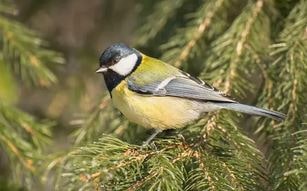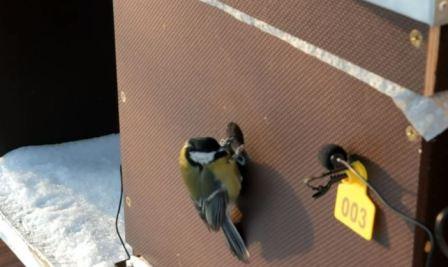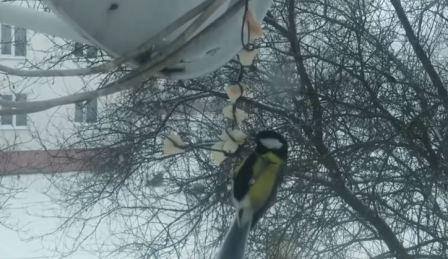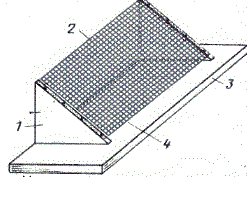How to protect hives from tits in winter - Tit Protector

What birds disturb bees in winter? These are woodpeckers and tits. Tits are very useful birds that destroy many harmful insects. Tits do not fly south, but spend the winter in place. One tit destroys 6.5 million harmful insects per year, thereby saving gardens and forests from them. However, for beekeepers, when bees winter outside, tits can cause great harm to bees. How to protect bees from tits during wintering.
What can tits do in the apiary?

What can tits do in the apiary? In winter, tits actively search for food and may visit the apiary for this purpose. Many may be surprised - can a tit eat a bee? Yes, the tit eats bees. If in summer the question of whether tits eat bees does not arise; tits have enough harmful insects in the forests to eat, then in winter hunger forces tits to eat bees. How do tits eat bees? Tits fly up to the hives, can knock on the flight board and if the bee flies out, then the tit eats the bee.
But bees eaten by tits are not the biggest problem; the worst thing is the state of anxiety in bees, increased consumption of feed, increased loosening of the winter cluster , diarrhea and other problems that increase exponentially.
How to protect hives from tits in winter
Protection against tits in the apiary can be divided into two components, which can complement each other.
• protection of bees from tits
• protection of hives from tits in winter
Protecting bees from tits

The first way to protect your apiary from tits is to make several feeders for tits and feed them yourself. This does not harm the tits, is not as expensive as it seems and will benefit all farmers in the area. Reducing pests will also reduce the number of treatments, which will benefit everyone.
Only, tits do not need to be fed in the apiary. Protecting bees from tits in this case is that you distract the tits to places away from the apiary. To do this, you do not need to leave tit feeders in the apiary. It is better if you place the bird feeder in a place far from the apiary. Thus, the tits will be far from the apiary. There is no need to hang up feeders and feed the birds and suddenly stop feeding them. Hungry tits will definitely find the apiary and begin to disturb the bees. It is better to make a feeder for tits with protection from pigeons and sparrows, so that only tits can be fed.
Protecting hives from tits in winter
The second way to protect hives from tits in winter is to make and install entrance barriers against tits.

In order to protect the bees from being disturbed by tits, entrance barriers against tits are made; such entrance barriers can be easily made by yourself. In essence, this is protection of the hive entrance from tits.
To do this, two triangles 60 mm long, 10 mm thick and 50 mm high are cut out of planks. And they are connected with a metal mesh with a 2 mm mesh. The mesh is connected to the triangles using soft sheet metal and small nails.
In this case, the mesh should be 15-20 mm shorter than the triangles.
If you place such a barrier on the arrival board, you will get a passage for bees.
To keep the barrier more firmly at the entrance, it is attached to the front wall of the hive with a nail.
You can have a couple of cats in the apiary; they will catch mice and scare tits and woodpeckers.
You don’t have to remove the pollen trap for the winter; it is left with the grille raised so that the hive entrance is closed from tits. It also protects the hives from tits in winter.
Some beekeepers attach a pine branch to the alighting board so that it covers the entrance. It also protects the hives from tits in winter.
